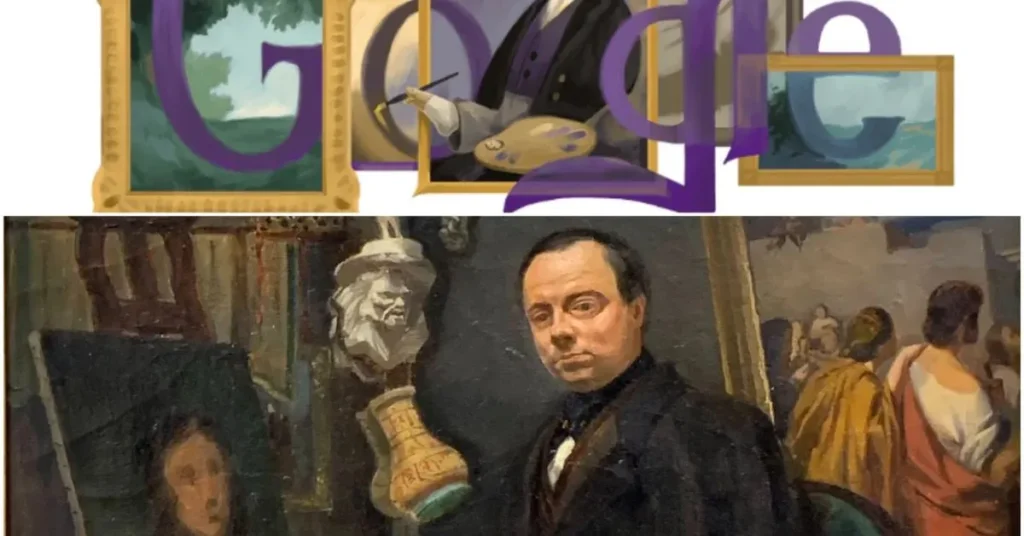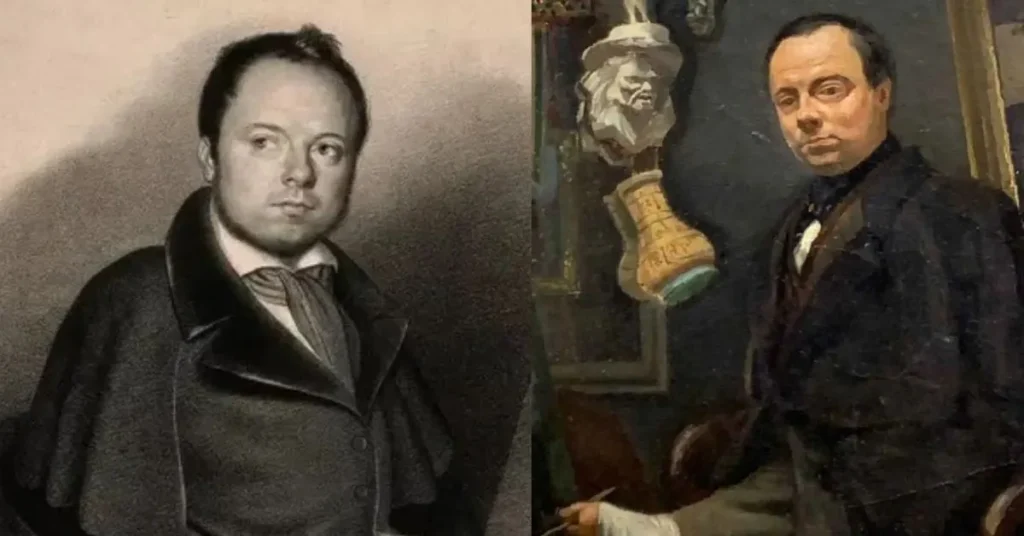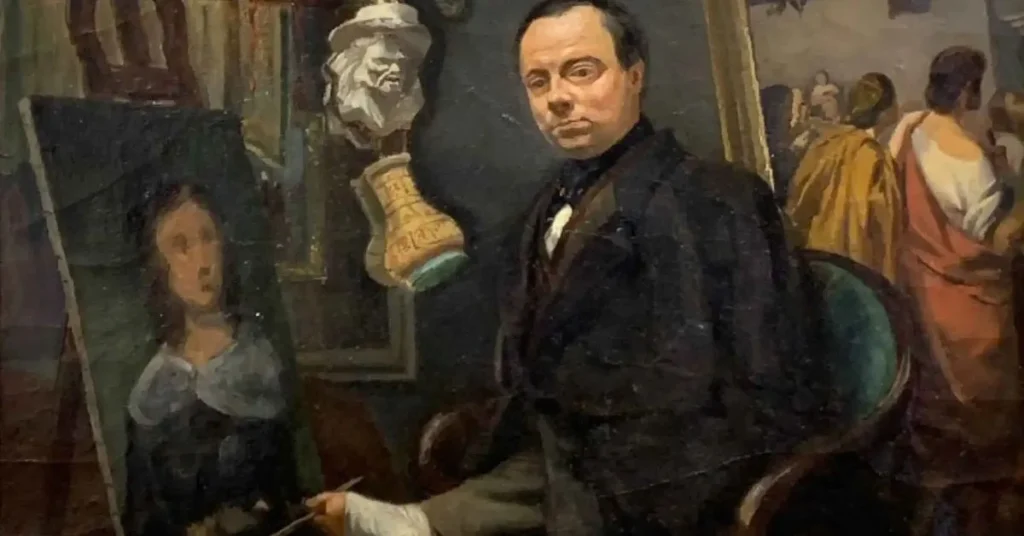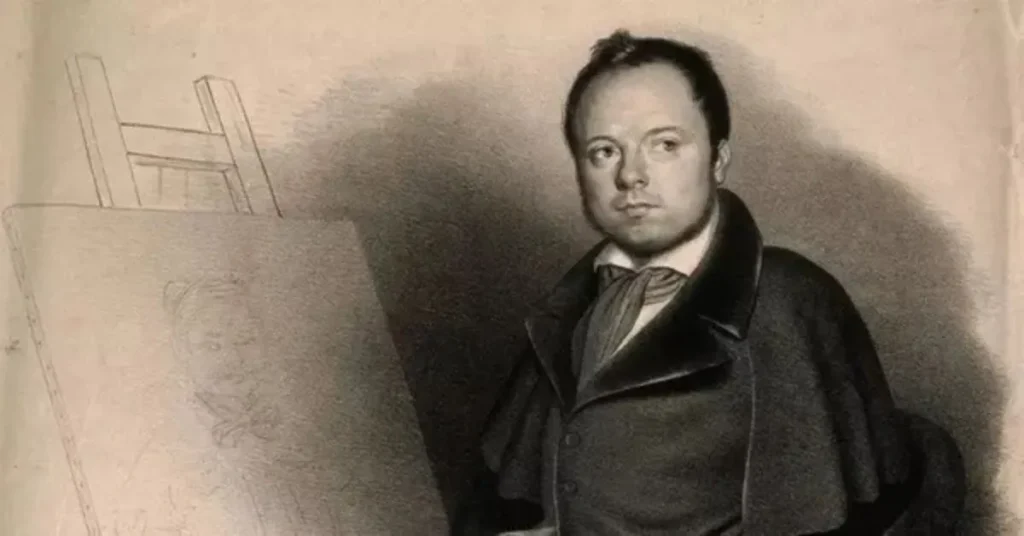Have you ever wondered how someone could create stunning artwork without using their hands? Meet Louis Joseph César Ducornet, a French painter who transformed physical challenges into artistic triumph.
Born with phocomelia, Ducornet lacked arms and his left leg. Yet, he became one of the most inspiring artists of 19th-century France, painting masterpieces with his right foot.
Early Life in France
In the textile town of Lille, France, on January 10, 1806, Ducornet was born into a humble family. His father, a hardworking shoemaker, couldn’t afford formal art education for his son.
Despite being born with phocomelia, young Ducornet showed an extraordinary spirit. His condition meant he had to adapt to a different way of life from the start.
Living in early 19th-century France wasn’t easy for someone with disabilities, but Ducornet’s family provided unwavering support that would shape his future.
Discovering Art
Imagine a young boy, unable to use his hands, discovering he could create beautiful drawings with his foot. That’s exactly what happened when Ducornet first picked up a piece of charcoal.
He started by drawing on walls, using his right foot to hold the charcoal. What began as simple sketches soon revealed an extraordinary talent.
The local community in Lille took notice. They saw beyond his physical limitations to recognize a gifted artist in the making.
Artistic Training
Thanks to the generous support of Lille’s citizens, Ducornet moved to Paris in 1824 to pursue formal art education. This marked a turning point in his life.
In Paris, he studied under renowned masters Guillaume Guillon-Lethière and François Gérard. King Louis XVIII even granted him a pension to support his artistic education.
His unique painting technique, using his right foot, amazed his instructors and fellow students alike.
Breaking Barriers in Art
Despite societal prejudices against disabilities in the 1800s, Ducornet refused to be defined by his physical limitations.
He developed innovative techniques to mix colors, handle brushes, and create detailed compositions – all with his right foot.
His determination caught the attention of art critics who recognized his exceptional talent rather than focusing on his disability.
Recognition and Awards
Ducornet’s work gained recognition at prestigious Salon exhibitions. His biblical and historical paintings particularly impressed the critics.
Maxime Du Camp, a prominent art critic, praised Ducornet’s work, stating his foot-painted art rivaled pieces created by hand.
His success at the Brussels Salon in 1836 established him as a respected artist in European art circles.
Signature Style

Ducornet specialized in religious and historical subjects, creating large-scale paintings that demanded incredible precision and control.
His use of vivid colors and dramatic lighting became hallmarks of his style. Every brushstroke showed remarkable control, despite using only his foot.
Critics noted his ability to capture emotional depth in his subjects, a skill that transcended his physical limitations.
Notable Works
“Repentance” (1828) marked his early success, demonstrating his mastery of biblical themes and emotional expression.
His masterpiece, “Mary Magdalene at the Feet of Jesus,” spans over eleven feet tall. The French government purchased this impressive work in 1840.
“St. Louis Administering Justice,” housed in the Lille Museum, showcases his talent for historical scenes and attention to detail.
The Self-Portrait Legacy
In 1852, Ducornet created a powerful self-portrait that spoke volumes about his identity as an artist.
This piece wasn’t just a painting; it was a statement about overcoming adversity and claiming his place in the art world.
The self-portrait continues to inspire artists facing physical challenges today.
Impact on Art Community
Ducornet’s success opened doors for artists with disabilities. He proved that artistic expression knows no physical bounds.
His story continues to inspire contemporary artists, challenging preconceptions about disability in the arts.
Working from his studio on Rue Visconti, he mentored other artists and shared his unique techniques.
Personal Life and Legacy
Despite health challenges, Ducornet maintained an active studio practice until his death at age 50.
His legacy lives on through his paintings and the barriers he broke for artists with disabilities.
Today, his works serve as testament to human resilience and artistic determination.
Influence on Modern Art
Ducornet’s approach to overcoming physical limitations influenced later artists facing similar challenges.
His techniques for painting with feet developed new perspectives on artistic creation.
Modern art therapy programs often reference his methods when working with differently-abled artists.
Historical Context

During Ducornet’s lifetime, France underwent significant social and artistic changes.
His success challenged prevailing attitudes toward disability in the arts.
His story represents a crucial chapter in both art history and disability rights advancement.
Through determination, talent, and innovation, Louis Joseph César Ducornet proved that true artistic vision transcends physical limitations. His legacy continues to inspire artists and audiences alike, reminding us that creativity knows no bounds.
Teaching and Mentorship
Despite his own challenges, Ducornet dedicated time to teaching others at his Paris studio.
His unique perspective on art creation offered students fresh approaches to technique and composition.
Young artists sought his guidance not just for technique, but for his inspiring approach to overcoming obstacles.
Critical Reception
Contemporary art critics praised Ducornet’s mastery of composition and color.
Reviews focused increasingly on his artistic merit rather than his physical condition.
His success challenged the art world’s preconceptions about disability and creativity.
Artistic Themes
Religious symbolism played a central role in many of Ducornet’s major works.
Historical scenes allowed him to showcase his talent for complex compositions.
His attention to emotional expression set his work apart from contemporaries.
Technical Achievements
Working with his foot, Ducornet mastered fine brush control comparable to hand painters.
He developed techniques for achieving detailed facial expressions and subtle shading.
His large-scale works demonstrated remarkable physical stamina and artistic vision.
Cultural Impact

Ducornet’s success challenged societal norms about disability in 19th-century France.
His story inspired early advocates for disability rights and accessibility.
Modern artists with disabilities often cite his example when pursuing their creative paths.
Read more: Michael Corleone Blanco Net Worth: From Crime To Success
Final Thoughts
Ever heard of a painter who created masterpieces with his feet? That’s Louis Joseph César Ducornet for you.
Born in 1806 in Lille, France, without arms and a left leg, Ducornet didn’t let his disability stop him. He turned charcoal and his right foot into tools of artistic expression.
From drawing on walls as a kid to creating massive biblical paintings that wowed Paris art circles, his journey is incredible. His most famous works like “Mary Magdalene at the Feet of Jesus” and his powerful 1852 self-portrait show what determination can achieve.

Hello, I’m Amelia Eva a dynamic author at TrendOxygen.com, specializing in Tech, Lifestyle, Business, Entertainment, and Sports. Passionate about uncovering the latest trends, my articles offer a broad range of topics, delivering insightful and captivating content for readers.
With an exceptional ability to simplify complex concepts, I make my writing approachable for everyone. Follow me on TrendOxygen.com for fresh insights and the latest updates on what’s trending in the world of technology, lifestyle, and beyond.


